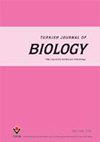Antioxidant potential of nanomaterials
IF 0.9
4区 生物学
Q3 BIOLOGY
引用次数: 0
Abstract
Background/aim: The novel field of nanomaterials allows infinite possibilities in order to create antioxidant therapies. The present review is aimed to describe the state of art concerning on nanomaterials and their effects on reactive oxygen species (ROS) production. A wide range of nanoparticles has been designed for this purpose, and each one possesses some particular characteristics which allow these significant antioxidant results. Several in vivo and in vitro works state the ability of these nanoparticles to mimic the redox systems of the cells, and thus, the potential role of nanoparticles as antioxidant treatment for several diseases. Materials and methods: This paper was written after a review of the articles published on the field, using the "PubMed" and "Research Gate" databases. Results: The main types of nanoparticles are listed and explained below, offering a global vision of the field with great interest for research. Antitumor chemo- and radiotherapies have been found to improve efficacy by enhancing the selectivity of cytocidal effects and minimizing systemic adverse effects when such materials are used. Furthermore, catalytic nanomaterials can execute energy-free antioxidant cycles that scavenge the most harmful reactive oxygen species via SOD- and catalase-like activities. Conclusion: This unique method is projected to result in significant gains in the long run. However, due to a lack of understanding of potential adverse body reactions to these novel strategies, caution must be exercised. Analyzing the biocompatibility of these nanomaterials carefully, particularly in terms of biokinetics and the problems that could arise from long-term retention of nonbiodegradable inorganic nanomaterials, is required.纳米材料的抗氧化潜能
背景/目的:纳米材料的新领域为创造抗氧化疗法提供了无限的可能性。本文综述了纳米材料及其对活性氧(ROS)产生影响的研究进展。为了达到这个目的,人们设计了各种各样的纳米颗粒,每一种纳米颗粒都具有一些特殊的特性,从而产生了这些显著的抗氧化效果。一些体内和体外研究表明,这些纳米颗粒具有模拟细胞氧化还原系统的能力,因此,纳米颗粒作为抗氧化治疗多种疾病的潜在作用。材料和方法:本文是在查阅了该领域已发表的文章后,使用“PubMed”和“Research Gate”数据库撰写的。结果:下面列出并解释了纳米颗粒的主要类型,提供了一个具有极大研究兴趣的领域的全球视野。抗肿瘤化疗和放疗已被发现通过增强细胞杀伤作用的选择性和最大限度地减少系统不良反应来提高疗效。此外,催化纳米材料可以执行无能量的抗氧化循环,通过SOD-和过氧化氢酶样活性清除最有害的活性氧。结论:从长远来看,这种独特的方法有望取得显著的效果。然而,由于缺乏对这些新策略的潜在不良身体反应的了解,必须谨慎行事。需要仔细分析这些纳米材料的生物相容性,特别是在生物动力学方面,以及长期保留不可生物降解的无机纳米材料可能产生的问题。
本文章由计算机程序翻译,如有差异,请以英文原文为准。
求助全文
约1分钟内获得全文
求助全文
来源期刊

Turkish Journal of Biology
BIOLOGY-
CiteScore
4.60
自引率
0.00%
发文量
20
审稿时长
6-12 weeks
期刊介绍:
The Turkish Journal of Biology is published electronically 6 times a year by the Scientific and Technological
Research Council of Turkey (TÜBİTAK) and accepts English-language manuscripts concerning all kinds of biological
processes including biochemistry and biosynthesis, physiology and metabolism, molecular genetics, molecular biology,
genomics, proteomics, molecular farming, biotechnology/genetic transformation, nanobiotechnology, bioinformatics
and systems biology, cell and developmental biology, stem cell biology, and reproductive biology. Contribution is open
to researchers of all nationalities.
 求助内容:
求助内容: 应助结果提醒方式:
应助结果提醒方式:


